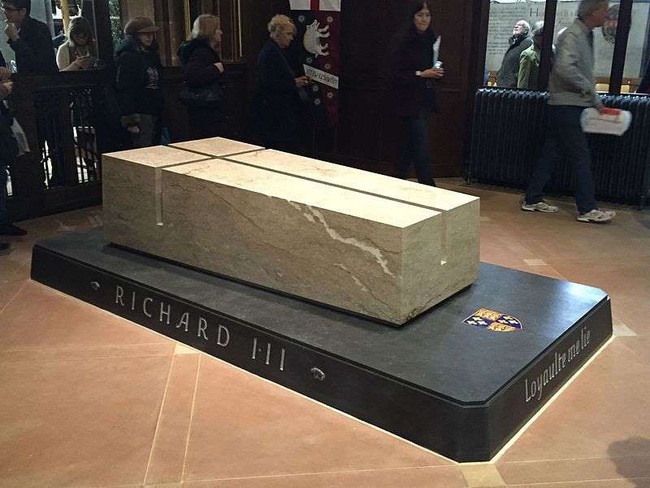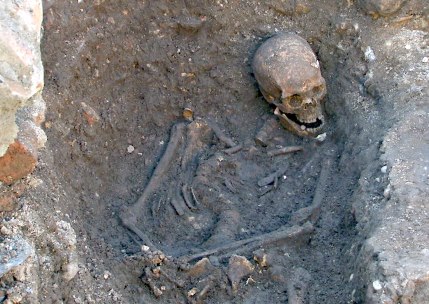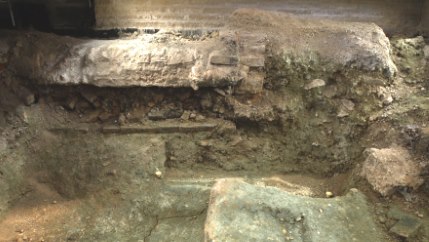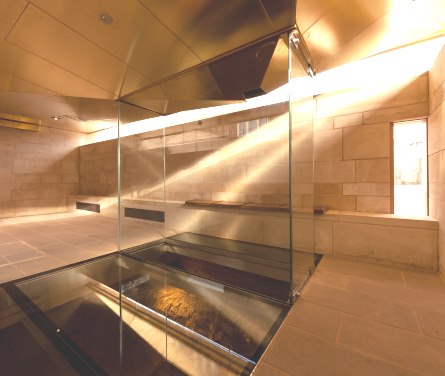Tomb of King Richard III, England: This discovery attracted great attention from the media, historians and Shakespeare lovers. King Richard III died in battle in 1485 and was a “hero” in Shakespeare’s play of the same name. In 2012, his grave was found in the ground of a car park next to Greyfriars Church, Leicester. Three years later, the king was buried again in a marble tomb at Leicester Cathedral.
In August 2012, a team of archaeologists from the University of Leicester uncovered the remains of Richard III, the English king who reigned from 1483 until his death in battle in 1485. This remarkable discovery quickly made headlines worldwide, highlighting the triumph of modern science in identifying the skeletal remains and the determination of those who sought to find them. However, amidst the media frenzy, the story of the grave itself, where the king had lain for over 500 years, was somewhat overshadowed.

The Grave of Richard III
Although Richard III was buried in the prestigious Choir of a Franciscan friary, his grave was prepared with little respect. When looking down into the grave, now preserved beneath glass flooring at Leicester’s King Richard III Visitor Centre, one is struck by its size. The grave is so small that Richard III’s head was forced forward and upward at an awkward angle. Other graves excavated in medieval Leicester had neatly squared sides, including those found during the same dig. In contrast, Richard III’s grave was narrower at the bottom than the top and rounded where the sides met the base. Additionally, unlike other graves from the same period, his grave lacked a shroud or coffin, suggesting it was hastily dug.

Expansion of the Excavation
In 2013, archaeologists returned to expand their excavation around the grave site. They uncovered medieval floor tiles just 2 meters from the grave, which would have covered the floor of the Choir. The level of these tiles indicated that the grave was so shallow it was barely below ground level. The historical record does not explain why Richard III’s grave was so narrow, shallow, and short, but it is possible it was dug in haste as Henry Tudor wanted to leave Leicester for London quickly to claim the throne. The friars may have been hurriedly digging under the watchful eyes of Henry’s soldiers.

The Robber Trench and Subsequent Discoveries
During the excavation, archaeologists found a robber trench beside Richard’s skull. Robber trenches are voids created when something is removed, in this case likely a foundation stone taken during the Dissolution in the 1530s. The trench was so close to Richard’s skull that the stone-thief probably exposed the bone when lifting the stone. Whether the thief was too engrossed in his task to notice the bones or chose to leave them undisturbed remains unknown.

Modern Construction Above the Grave
Adding to the intrigue, archaeologists found the foundations of an 18th-century outhouse just 90mm above Richard’s legs. This outhouse contained a coal store, a toilet, and storage space. The laborers who built it were unaware that Richard III’s body lay just beneath their feet. Later, in the early-to-mid 20th century, these outhouses were replaced by a garage and new coal store. Fortunately, the builders did not dig deeper foundations, which would have destroyed the medieval archaeology and the king’s bones.
Missing Feet and Historical Impact
While excavating the skeleton, it was noted that Richard III’s feet were missing. The condition of the tibia indicates that his feet were present when he was buried. Their current whereabouts remain a mystery.
Had Richard III’s bones been discovered before the modern era, they likely would have been reburied in an obscure location, possibly in a pit with other disturbed remains. If this had happened, the king’s bones and the grave that reveals much about his burial circumstances would have been lost to history forever.




